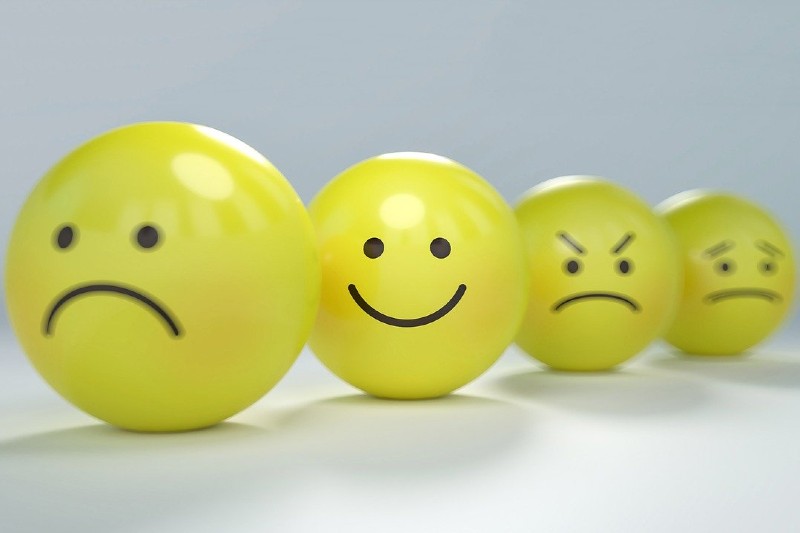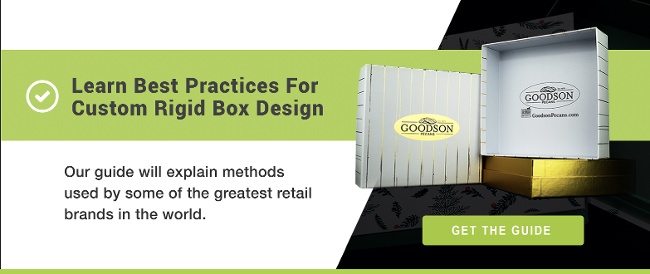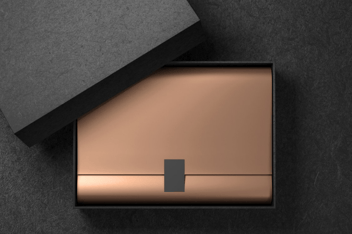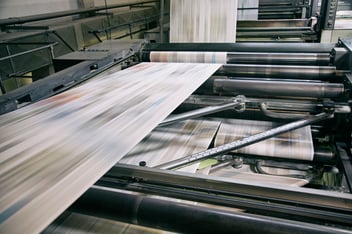Emotional Connections and Retail Packaging Design
Your retail packaging design should evoke an emotional response worthy of the high-end product that you plan to put in it.
Branding is so much more than choosing colors and fonts that work well together. Solid branding invites a reaction. We always hope for a positive public response when we launch a new product or revamp a current one, but sometimes the line that separates standing out from the competition and deterring our ideal customer is a hard one to see.
Understanding the science behind the emotional connection that customers have to retail packaging can keep you from making expensive design mistakes with your brand.
The Connection Between Color and Emotional Branding
From birth, we are attracted to colors—some more than others. It’s an act ingrained within our psychological makeup. Knowing this, it should come as no surprise that our shopping habits as adults are influenced by this same primal instinct.
Plenty of research has gone into exploring the psychological response to particular colors. This information has been used in a myriad of ways, including consumer research and emotional branding.
The colors you choose for your branding are pivotal for attracting your ideal customer. They create the image that you portray. Cool colors, for example, are easy on the eyes. Colors along the blue and green spectrum induce a calm presence and work well for companies in the health and wellness industry.
Bright colors live on the opposite end of the emotional branding spectrum, creating a mood of excitement. This is where you see your reds and oranges. If your brand’s goal is to create a high-energy atmosphere for your customers, this range of colors is what you would typically choose.
A pivotal point to consider when it comes to color and emotional branding is cultural nuances. This idea slots right into identifying your ideal customer.
Consider the cultural significance of different colors. In Western culture, black is typically associated with mourning. But across the ocean in Eastern Asian cultures, the color white holds the same significance. If you plan to market your product to other cultures, a good place to start would be a thorough dive into how they perceive different colors.
The Importance of Storytelling
Nothing drives sales as well as authenticity. Your customers want to know they’re buying a product from a real person, not a faceless corporation. If you can portray your authentic self through your retail packaging design, you will see this extra attention to detail reflected in the relationships that you build with your customers.
The first rule of selling is to build relationships. Relationships create trust, and trust creates repeat sales. It’s a cyclical endeavor that guarantees a lifelong partnership. You first build this relationship by exposing yourself as human and showing your customers that you understand their pain points.
You accomplish this in your branding through creating level ground. Let your customers know your story. Tell them that you’ve been where they are, and you have a solution to their problem. Laughter is the best medicine for a reason. Use humor to connect with your audience, and don’t fear being bold. Most people appreciate a brand that is willing to stick their neck out a bit.
Bonus points are awarded to brands that can incorporate information about their product into the messaging of their packaging design. A jewelry manufacturer, for example, might want to include information about a particular charm or jewel on the inside flap of their rigid box. It comes down to having an innovative use for the space available.
Functionality in Retail Packaging Design
When designing a retail package, you need to make it easy to open. Customers who get frustrated with your packaging won’t be buying it a second time. For luxury packaging especially, consider using a rigid box that easily unfolds to reveal your beautiful product nestled within.
However, consider that functionality operates beyond your customer’s initial reaction to your packaging. If you package your product in a rigid box that can be reused, customers will be more likely to buy it a second time. Many jewelry manufacturers have their packaging also act as a means of storing their product once their customer gets it home.
Packaging that serves multiple functions also attracts buyers. Many subscription boxes are designed to be repurposed. Once it has fulfilled its original intent, your customers might find that it works well for storing knick-knacks or crafting supplies.
The simple addition of a handle to your retail packaging design can turn a one-time-use box into something that can be used over and over. Puma’s Clever Little Bag is a perfect example of packaging that performs multiple purposes.
Creating an emotional connection with your customers through your retail packaging design can be tricky. But once you’ve done a little research on who your target audience is and what they’re looking to spend their money on, the process becomes a piece of cake. The right packaging producer will help you slice and serve your design so perfectly, your customers won’t be able to resist taking a bite.






